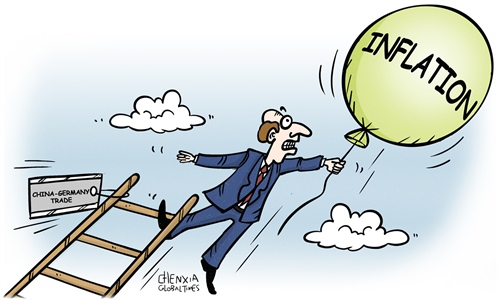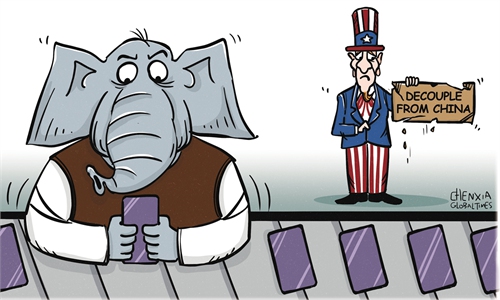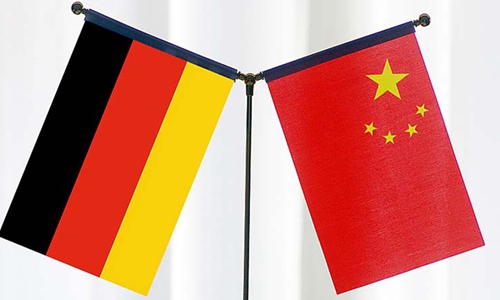China to play greater role in global economic growth, but faces uncertainty from geopolitical risks: senior UN economist
Four 'new transformations' will shape the future of Chinese economy
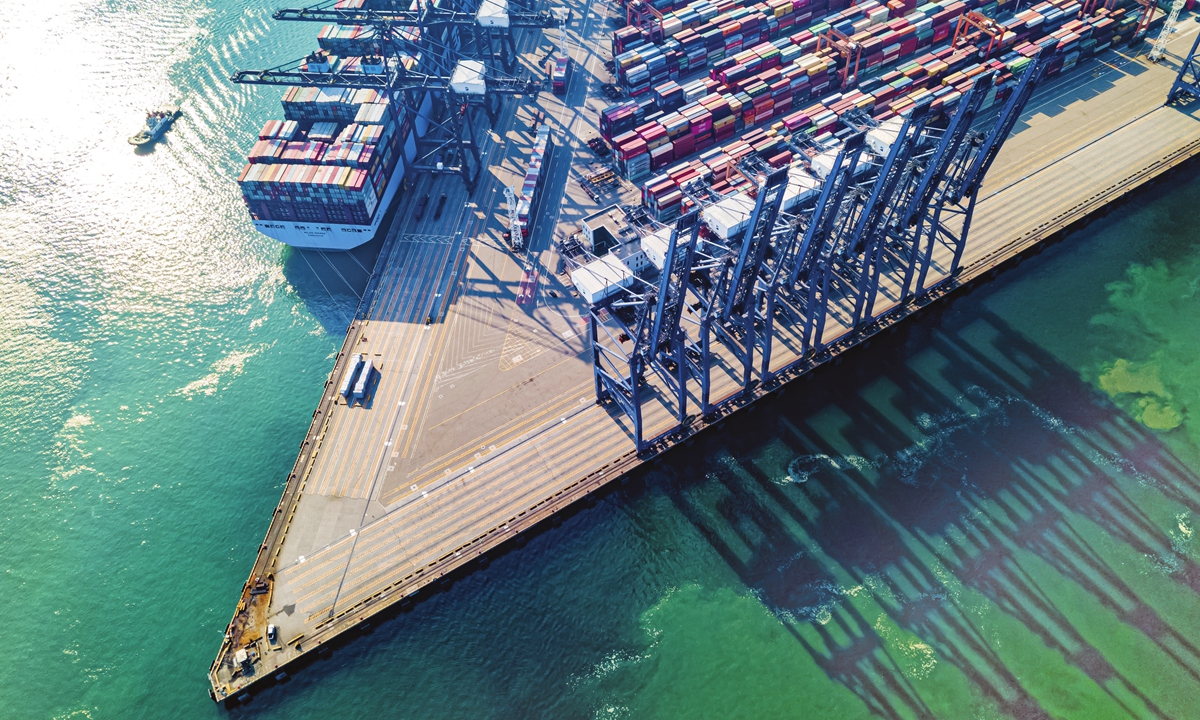
The Yantian Port in Shenzhen, South China's Guangdong Province Photo: VCG
Editor's Note:At a time when the world is facing multiple major challenges, the role of China's economy as a "stabilizer" in the world economy remains prominent. The Global Times (GT) conducted an interview with Liang Guoyong (Liang), a senior economist with the UN Conference on Trade and Development, sharing his views on what China's economic achievement has brought to the world economy over the past decade.
GT: What impresses you the most in terms of the driving forces for China's economic development over the past decade?
Liang: In my book Chinese Economy 2040: The Changing Global Landscape and a New Path of Development published in 2016, I argue that: during the first three decades of China's reform and opening up, the combined force of four "conventional transformation," namely marketization, internationalization, industrialization and urbanization, promoted the rapid growth of China's economy; afterwards, the four "new transformation" in consumption, services, digital and AI transformation, as well as greening will shape the future of China's economy.
Over the past decade or so, the Chinese economy has indeed made rapid progress in the four areas of "new transformation," which has become the main driving force to promote economic growth and improve development quality. In particular, in terms of consumption transformation, the total retail sales grew rapidly, the contribution of final consumption expenditure to GDP growth significantly increased, and consumption upgrade driven by the brand, quality and digitalization continued to deepen. The improvement in both the quality and quantity of consumption in China has provided huge business opportunities for both domestic enterprises and multinational corporations, both large firms and small- and medium-sized enterprises, across a wide range of industries.
GT: Recently, the Biden administration has apparently ratcheted up its push for a tech decoupling from China. What do you think of China's technological growth and the impact of the US move?
Liang: Since the beginning of its reform and opening up, especially after 2000, China has made significant scientific and technological progresses at an amazing speed and scale. From the perspective of its national innovation system: in terms of input, the size of R&D expenditure and its proportion in GDP have been constantly increasing; in terms of output, the numbers of scientific papers and patent applications have grown rapidly, both ranking among the top in the world. However, China still lags far behind the US in basic research, and the overall structure and efficiency of the innovation system need to be improved.
Over the past few years, with the implementation of a series of restrictive measures by the US government, a certain degree of "decoupling" has occurred between China and the US in the field of science and technology. This is not beneficial for both sides, nor is it good for the world economy. For China, the openness of the national innovation system is adversely affected, which will inevitably affect its performance. Under rather closed conditions, huge investment can bring breakthroughs in key areas, but its efficiency may not be high.
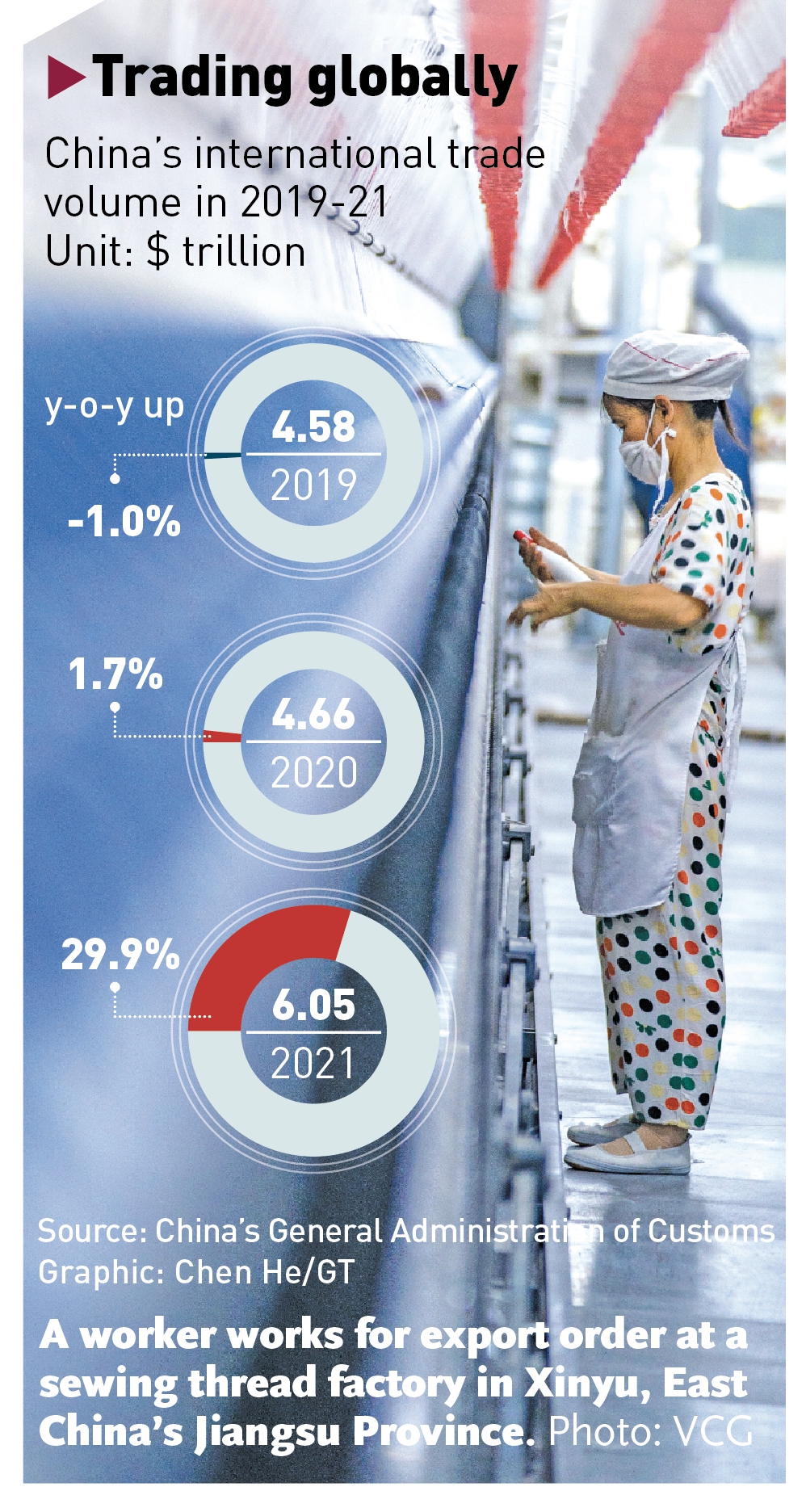
Graphic: Chen He/GT
GT: The competition between China and the US across the industrial chain is becoming increasingly intense. What is your perspective on the US-pushed "decoupling" of the two economies?Liang: In the process of globalization during the past decades, the economies of China and the US have formed an overall pattern of close interaction and interdependence. However, there are indeed signs of a gradual "decoupling" between the American and Chinese economies. During the past few years, "decoupling" has shown different situations in the areas of trade, technology and finance.
In order to meet the challenges facing the global economy, including supply chain risks and shocks, the cooperation of all countries in the world, especially major economies including China and the US, is indispensable. Obviously, the weakening or even "decoupling" of China-US economic relations is not conducive to meeting these challenges, nor is it constructive for the stability and growth of the world economy.
GT: China in the past 10 years has developed new ways of pursuing opening up on all fronts, forming globally oriented networks of trade, investment and financing, signing multiple FTAs and similar deals around the world. What do you think of the development?
Liang: Over the past two decades, China has implemented a proactive free trade strategy and signed agreements with countries including Australia, Cambodia, Chile, Costa Rica, Georgia, Iceland, Maldives, Mauritius, New Zealand, Pakistan, Peru, Singapore, South Korea and Switzerland, as well as with ASEAN. Currently, there are 10 free trade agreements under negotiation.
The Regional Comprehensive Economic Partnership (RCEP), of which China is an important member, entered into force on January 1, 2022. Apart from integrating some of the previous bilateral agreements, China has established free trade relations with important economies such as Japan and South Korea through RCEP, which has far-reaching economic and political implications.
For China, FTAs are conducive to expanding trade volume, fostering industrial upgrading and promoting economic growth. At the same time, the level of China's economic openness to the outside world will also be improved, thus providing countries with important opportunities to expand their exports and share the "dividends" of China's development.
GT: Recently, the G7 and other economies have put forward their own infrastructure initiatives, but are generally viewed by the outside world as being launched to compete with the Belt and Road Initiative (BRI). What role do you think the BRI can play in helping developing countries? Given the current situation, is it possible for the global economies to strengthen coordination and jointly respond to the global economic challenges?
Liang: For low-income developing countries, backward infrastructure and insufficient manufacturing capacity have been major obstacles for industrialization and economic take-off. By providing necessary investment, financing and technical support, the BRI can play an important role in promoting infrastructure development and industrial capacity building in those countries.
Recently, the G7 launched the Partnership for Global Infrastructure and Investment (PGII). Regardless of its competitive, geopolitical motives, the G7's move highlights the need to mobilize resources globally to boost infrastructure in developing countries, which is exactly what BRI advocates. For low-income recipient countries, the coexistence of two competing investment initiatives is clearly a good thing.
Whether PGII or BRI, the successful implementation needs to be closely integrated with the sustainable development of recipient countries, taking into account the economic, environmental and social impacts of projects. How to promote green investment in infrastructure to promote climate change mitigation and adaptation is extremely important.
GT: China aims to basically achieve socialist modernization by 2035. What role do you think China will play in the world economy in 2035?
Liang: Since 2021, China has begun to implement the 14th Five-Year Plan for National Economic and Social Development and the Vision 2035. It is particularly worth noting that, after the long-term goals were first proposed in 1995, the country once again launched a long-term vision, this time spanning three five-year plans, which draws a blueprint for its economic development in the future.
According to the vision, China will realize modernization, with its economic and technological strengths leaping by a large margin. The total economic volume and per capita income will also rise to a new level. China will basically realize new industrialization, informatization, urbanization and agricultural modernization, and build a modern economic system. In my opinion, China will adhere to the reform and opening-up policy, which explains its past success, and realizes the new, magnificent development goal. In 2035, the country will play a more important role in the world economy. In terms of scale, China is expected to become the largest economy by then, but uncertainty exists due mainly to geopolitical risks.
GT: How do you see global economic trends in the short term and over the long run? Do you think the Chinese economy will recover at a pace faster than global average?
Liang: The world economy in the post-pandemic era is likely to be characterized by low growth and high volatility. The latter is mainly manifested in high inflation, increased financial risks, and (energy and other) supply shocks. Although the short-term impact of the pandemic is waning, its long-term effects will continue to plague the world economy. In addition, the Russia-Ukraine conflict has aggravated the energy crisis in some regions and made the threat of inflation to the world economy more serious.
After the outbreak of the pandemic, Chinese economy showed great resilience, with its recovery taking the lead at the global level and strong production and exports supporting the world economy from the supply side. In addition, Chinese government has avoided excessive economic policy stimulus, leaving a sufficient room for future policy intervention. However, the epidemic situation in China has deteriorated recently and economic activities have been affected. If the epidemic prevention measures and economic development can be better balanced, China's economy will be able to release its growth potential and realize a recovery much faster than the global average.
